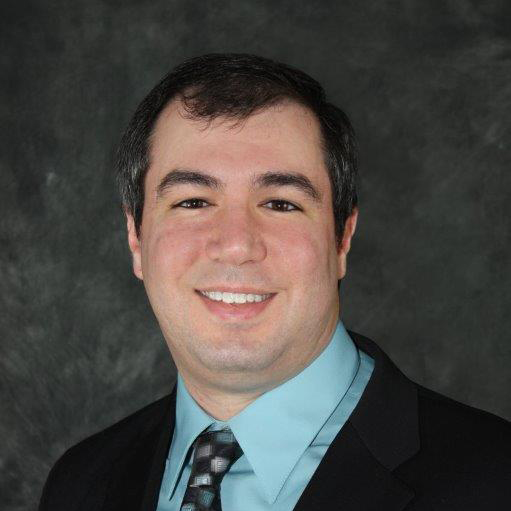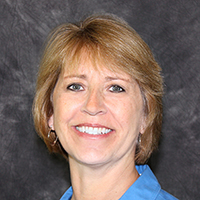Avoiding Nursing Home Penalties for Ineffective Respiratory Protection Programs
- 0.5
- 1
- 1.25
- 1.5
- 1.75
- 2
Paul Anderson: Welcome to Smart Healthcare Safety from ECRI, the most trusted voice in healthcare, committed to advancing effective, evidence- based, care. I'm your host, Paul Anderson. And over the past 12 years, I've overseen our patient safety risk and quality membership programs here at ECRI. Tens of thousands of healthcare leaders rely on us as an independent, trusted authority to improve the safety, quality, and cost- effectiveness of care across all healthcare settings worldwide. You can learn more about our unique capabilities to improve outcomes at www. ECRI. org. We're recording this podcast from our respective home offices, as we practice and encourage all of you to practice, good social distancing to help limit the spread of COVID. Today's episode is part of ECRI's ongoing response to the COVID 19 pandemic. We'll discuss the importance of respiratory protection programs in aging services provider organizations. Nursing homes have recently been assessed millions of dollars in fines for failing to have effective respiratory protection programs in place. We'll look at what the rules require, why nursing homes may struggle to comply, and answer some questions we've gotten from our member organizations. To get us started, I'll ask our two guests to introduce themselves.
Maureen Cassin: My name's Maureen Cassin, and I am the Medical Director of Infection Prevention and Control at ECRI.
Jean Harpel: This is Jean Harpel. And I am the Operations Manager of the Aging Services Department at ECRI.
Paul Anderson: So, Maureen I'll look to you to get us started. I mentioned in the beginning that we're starting to see OSHA implement some fines for failure to comply with the respiratory protection standard. Can you outline some of the basic requirements of that standard and maybe talk about a little bit about why it's in place, who does it protect?
Maureen Cassin: Okay. First I'll mention that the standard really states that the employers develop a written site specific plan if there's any risk that the employees are going to come in contact with a respiratory hazard. And in general terms, the plan outlines the safety needs, determines which equipment's appropriate, and documents the needs and their plan. So the plan's developed to protect not only the health care personnel, but anybody who's going to come in contact with a potentially hazard of respiratory pathogen. This could include in addition to the personnel, security, food service, environmental services. So it's very important to determine who's going to need protection and what protection's appropriate to the situation.
Paul Anderson: So Maureen, if the individual sites have to have a site- specific written respiratory protection program, what are some of the key elements that are going to have to be represented in that plan?
Maureen Cassin: Well, the first step in developing a respiratory protection plan is really choosing a respiratory protection administrator. This is a individual who is willing to oversee and develop this plan. There's no special training that's required, but they really have to be committed to developing this plan, and changing it as needed along the way. There should be one specific person in charge to maintain the cohesion and the consistency of the plan. If the health care system has a number of different campuses, it's reasonable to have one person per campus. The first step in developing the plan, the administrator conducts what we call a hazard assessment. So the administrator looks at who's performing what duty, and is there a hazard associated with that duty? This is documented in a form. And if any hazards are found, the next step is to determine what is the appropriate equipment? If it's determined that respirators are appropriate to the airborne hazard, then the employee's going to need to have a medical evaluation prior to fit testing. A lot of people are surprised to hear this, but the medical evaluation is really important in making sure that the employee's able to tolerate the respiratory equipment that's necessary. Some medical conditions, such as some breathing problems, claustrophobia, anxiety, may make it very difficult for certain employees to tolerate fitted respiratory equipment. The medical exam starts with a questionnaire, then a brief medical exam, and the findings are documented, including are they able to use respiratory equipment, or do some changes need to be made, or are they unable to tolerate it all together? Following medical testing, the employee will get what we call fit testing. And this is a series of maneuvers to make sure that they are able to wear a mask with a tight seal. If the seal is not tight, then there's going to be inadequate protection. The findings of this fit testing are documented, and the fit testing needs to be repeated annually. A failure to repeat the fit testing annually is a big area where fines are levied. In addition to all this there's training in the use and storage and disposal of this equipment, and all these training sessions have to be documented. So there's a lot of record keeping that goes into the respiratory protection plan, but it's very important, and these documents need to be accessible to OSHA on request. Another thing that is included in the written documentation is any exposures to employees and the mitigation steps taken to make sure these exposures don't happen to anybody else. Finally, the administrator really needs to solicit feedback from the employees. They may find that upon questioning the employees are having a difficult time with the respirators, they're not using them properly, or they've forgotten the training that they received months prior. Any revisions that are made because of this feedback should be documented. Now, OSHA doesn't really outline how often the respiratory plan should be revised, but ECRI recommends at least annually.
Paul Anderson: Okay. And, Jean, let me bring you in. We've discussed that historically nursing homes maybe haven't been, I'll say maybe they haven't been as attentive to the rule as say, folks in hospital settings have been. Is that a fair characterization? And if it is how come?
Jean Harpel: Yeah, you're right, Paul. Typically, in nursing homes, they just haven't done this type of respiratory protection program. And that's because when N95s were needed, it was usually for a very specific type of infection in which if they had it, they would transfer that resident out to the hospital, and then let the hospital treat their residents. But now with COVID this has all changed. And the COVID positive residents, and even those who are suspected with COVID, are not going to the hospitals, but they're staying with them in their units. So they do want to be compliant. It's just, this is like uncharted waters for them.
Paul Anderson: No, that makes sense. If it's not a kind of, you talked about, Maureen, the hazard assessment that they've had to do. This is a new hazard that certainly wouldn't have shown up on a hazard assessment say in October of 2019. It just wasn't on their radar to deal with this. I mentioned in the opening that we're seeing a lot of fines being levied against nursing homes related to the respiratory protection standard. And Maureen, you mentioned that a big area, we see where traditionally folks get caught up is doing that annual refit testing. What kind of violations are we seeing now against nursing homes with regard to the protection standard, the respiratory protection?
Jean Harpel: So if you don't mind, I'll take this one, Paul. Just on Friday, the US Department of Labor's Occupational Safety and Health Administration announced on Friday that they have levied$ 3. 4 million worth of fines against operators. And many of them are senior living providers, of course. And as Maureen did mention, they've been cited for failing to implement written respiratory protection programs, failing to provide that medical evaluation for their staff, the respirator fit test and training on the proper use, and failing to report an injury, illness, or fatality. Those are the main areas where they're being fined.
Paul Anderson: I know, Jean, that we're seeing a lot of questions come in from our various member provider organizations who are, like you said, they're certainly trying to comply. They want to comply. So it is not for a lack of interest in it. But I thought we could go through a couple of those questions and answers, and Maureen and Jean, both of you could share some of the advice we would give to somebody who has a question like this. And let's start with fit testing, which we've mentioned a couple of times now. So maybe to start, Maureen, can you describe maybe in a little bit more detail, what fit testing is, who does it, how it works, if I was working in a nursing home and they told me you need to go through fit testing, what would happen to me?
Maureen Cassin: Fit testing is actually a really simple and quick procedure. It takes about 10 to 15 minutes. There are two different types of fit testing called quantitative and qualitative. I won't go into all the details because really in the healthcare setting, we're mostly talking about N95 respirators. And that tends to be what we call a qualitative fit test. The tester puts a large, loosely fitting, hood over the employee, and there's a little valve, and they spritz a chemical that has like a strong smell to it. One of the examples is bananas. The employee, without a mask, verifies that they can smell the banana or the saccharin or whatever the test chemical is. And then they put the mask on. And the point is that you're not supposed to be able to detect the scent if the mask is fitting properly, and it may be that the mask needs to be readjusted or sized up, and then the test repeated until you cannot smell the test chemical. You go through various motions, like moving your head side to side, you read a passage that they hand you, and you bend over at the waist just to make sure with day- to- day activities there is no leak. Now the person who does the testing really doesn't need any special training. They just have to be able to make the test solution, calibrate the equipment, and perform the tests properly, according to the instructions.
Jean Harpel: A great point about, so you don't have any particular training, and that some of our communities have hired outside vendors to come in and perform this testing for their staff. And others are finding that it's a little bit easier to train their infection prevention person, or a staff member, and then conduct the testing themselves right on site instead of waiting for an outside vendor to come in and do it.
Paul Anderson: So, A, I'll confess that I really don't like bananas. So I'm glad to hear that there's finally a good use for them, but also you mentioned at the beginning, Maureen, that we need to redo the fit testing annually. How come? Does the shape of my face change that much from year to year?
Maureen Cassin: It may. Sometimes depending on weight changes, the mask may need to be adjusted. The rule of thumb is any change greater than 10 pounds should alert the employee that they need the testing. Other things such as cosmetic surgery, change in dentures, facial scarring, they may cause the seal to be insufficient. I will also mention a big bone of contention is facial hair.
Paul Anderson: I was just going to ask that.
Maureen Cassin: And the CDC has a chart of acceptable facial hair and unacceptable. And this includes beards, mustaches, sideburns, and it's often necessary for the employees to remove all facial hair in order to get a tight seal.
Paul Anderson: I'm just sort of envisioning, literally the footprint, the geography on my face where a seal would fit, and sure, any kind of facial hair is going to affect that. That makes sense.
Maureen Cassin: Even razor stubble can break the seal.
Paul Anderson: Sure. Okay. So we've checked off bananas and get a better razor so far today. Let's move away from fit testing a little bit. We've got a couple other questions I want to address that we got in from some of our provider organizations. Jean, this one fascinated me. They shared with us an article about using electronic cookers, instant pots, to disinfect N95 masks. What's our take on that? Are we recommending that?
Jean Harpel: Yeah, that was an interesting question, wasn't it? So, you would never think, prior to COVID, that we would be looking at ways to decontaminate respirators between uses so to speak. You would discard them and get a clean one out, but with shortages in PPE, looking for ways to decontaminate them has been a big issue for provider organizations. So this article came out, and one of our members asked us about it. And so here's our take. No. And here's why. Most instapots can get a temperature of 100 degrees Celsius. And that's really higher than the dry heat temperature that's been proposed and tested in some of the studies that we've seen. And so you could have degradation of the mask, especially after one or more decontamination times that you're doing it. So it's just kind of risky, and we're not sure if the mask would actually withstand that high of heat. So there are other methods to decontaminating masks. And at this time we would think that those are better alternatives. So that's suggested vaporized hydrogen peroxide and UV light are two ways that are acceptable.
Paul Anderson: And then the last question I wanted to bring up here was about sort of the applicability of the respiratory protection standard. And I think this is a really, if I'm in a healthcare setting, in a nursing home, in a provider organization that really has not implemented this broadly and fully in the past, this can seem a little bit overwhelming. And I think the question that came in was does the standard apply to all areas of the nursing home, or just those areas where we would normally be using an N95 mask? I'm curious what our guidance is to folks in that situation.
Jean Harpel: So where you're going to wear an N95 is, again, only in the areas where you have residents who are either COVID positive, or suspected for COVID positivity, there in the holding room, if you will, waiting on back on their results. So that's where you would want to wear an N95. And those are the areas that would need to wear an N95. The people that would need to be fit tested would be anyone who goes into those areas. So certainly any of your healthcare personnel who are taking care of those residents, as well as any ancillary staff that might be coming in. So maybe dining, maybe facilities, maybe housekeeping. So anyone who would be going into what we'll call the COVID unit would need to wear an N95, and therefore that is where you have to have your respiratory protection program initiated. Now, should you not have respiratory protection throughout the entire community? Well, yes, the answer is yes, but they don't have to wear N95s in the whole community. But you do need to know when do you wear a regular mask, when do you need an N95? And so that's why I want to say it's more of a comprehensive across your entire organization, but specifically knowing when to wear the N95. And that would really just be where, right now, where we have COVID positive patients.
Paul Anderson: Yeah. I mean, certainly I'm imagining a scenario where people have COVID before I know they have COVID. So, you've got residents in their rooms or on different areas of the organization before they get tested and before they get brought in for that. In theory, folks who are around them are still at some level of risk. We just don't know it yet.
Jean Harpel: Yeah, that's right. That's an excellent point. These masks should not be, these respirators, if you will, should not be worn by the residents.
Maureen Cassin: I would like to bring up one quick point in that it's really not appropriate for the residents to be wearing N95s or their visitors. They really should be reserved for people who have an identified hazard, have had the medical exam, and have undergone fit testing. The residents can wear surgical masks to protect others, but not N95s. It would be excessive to be putting a ill fitting N95 mask on them, especially in the setting of PPE shortages.
Paul Anderson: So let's wrap up the way I always try to, which is to identify one thing that our listeners can do right away. I don't think that they cannot, if they're starting from zero, they're not going to have an entire respiratory protection program in place in the next hour, let's say. But what's something they can do today that would make a difference and get them moving in the right direction?
Maureen Cassin: My suggestion is quick and easy. Before entering a person's room, do a two second assessment. Am I wearing the proper equipment?
Paul Anderson: Maybe say a little bit more about that. What kind of answers might I have? How do I know if I'm wearing the proper equipment?
Maureen Cassin: Is there a sign on the door alerting me to any particular hazard? Have I done my hand hygiene? Am I wearing a gown if required? And are there any indications that I need to be wearing a respirator rather than a surgical mask?
Paul Anderson: And you're right. That is something that we can start doing immediately, takes just a couple of seconds, and yeah, that'll have a meaningful impact.
Jean Harpel: So I'm going to say, assign someone to the role, someone who can champion it, and start to look into all of the different pieces of putting a respiratory protection program in place. So once you have that champion, they can go onto the OSHA website, and they can begin to assemble the pieces. And then the second thing is if you've gotten to the point where you know you can do testing is to actually bring the testing in- house instead of having to rely on an outside vendor. I do think that the communities that I've spoken to that have the in- house testing have benefited greatly by being able to do that on a dime instead of waiting for the vendor to come in. Those would definitely be the two things I would suggest.
Maureen Cassin: I'd like to mention that it does seem like a huge task, and it almost seems discouraging before you've even begun. But there is a lot of guidance from OSHA, as Jean mentioned. In fact, their guidelines have a number of checklists that will be very helpful, and they're already developed and you can download them, and they really are thorough and ensure that there are no gaps in your program.
Paul Anderson: All right. That's great, I think, thing for our listeners to go look for on the osha. gov site, because I think that'll really, checklists are a great tool, especially when you're trying to boil the ocean. So if we can work through some checklists and work down a list it can really help keep folks on track. All right, we'll wrap it up there. Jean, Maureen, thank you so much for your time today. You can find more publicly available resources for responding to the pandemic on ECRI's COVID- 19 resource center, and members of all of ECRI's services could find additional members only resources in our healthcare recovery center. Be sure to subscribe to Smart Healthcare Safety on Spotify, iTunes, Google Play, or wherever you get your podcasts to get our latest episodes. We welcome your feedback. Visit us at ECRI.org/ podcasts or email us at ECRI- podcasts @ ECRI. org.
DESCRIPTION
This podcast is part of ECRI's ongoing response to the COVID-19 pandemic.
Nursing homes have recently been assessed millions of dollars in citations for failing to have effective respiratory protection programs in place to protect staff and residents from COVID-19. Many of these violations are related to the failure to develop a written program, as well as for not providing medical evaluations, training, and fit testing for N95 masks.
In today’s episode, Dr. Maureen Cassin and Jean Harpel of ECRI, discuss the CDC recommendations and OSHA requirements, why nursing homes may struggle to comply during the COVID-19 pandemic, and answer some questions we've received from our member organizations.
Contact us at (610) 825-6000 or clientservices@ecri.org to learn more.
Today's Host

Paul Anderson
Today's Guests

Maureen Cassin, MD


